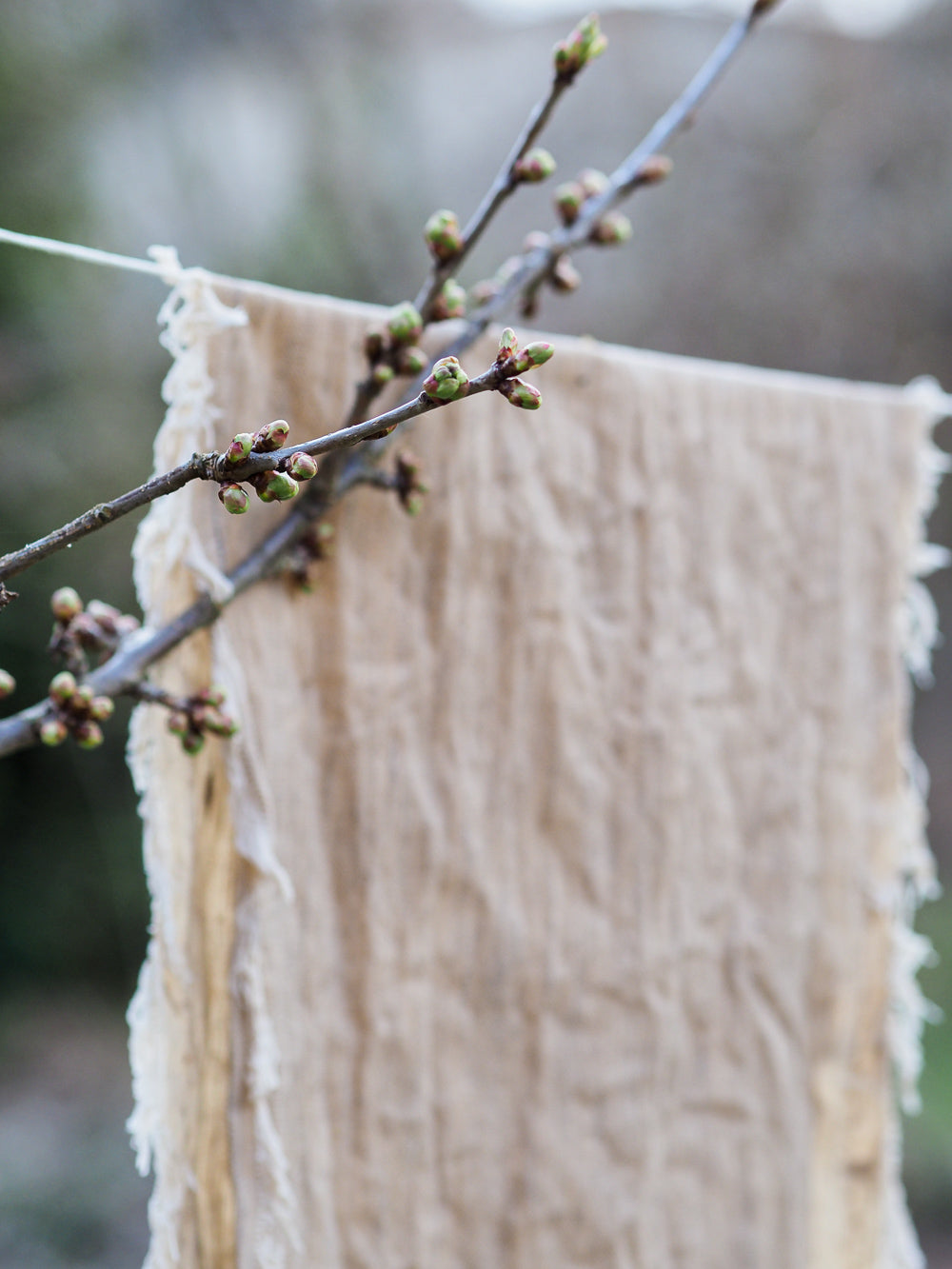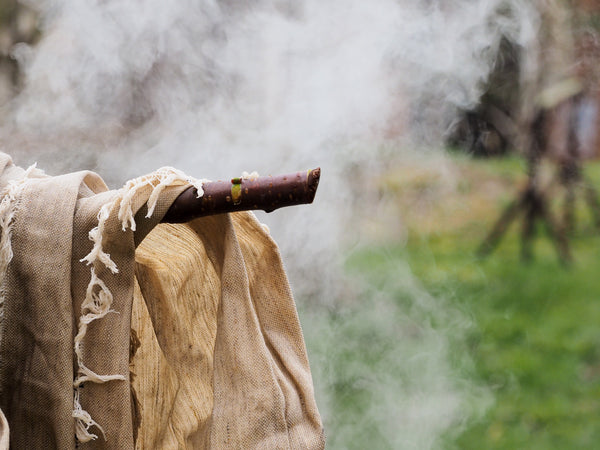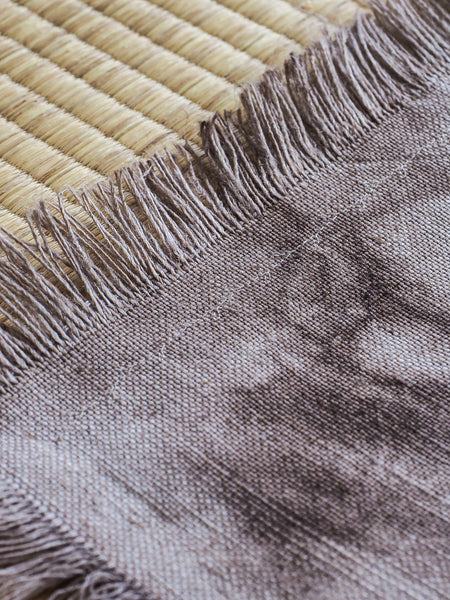
Tea Dyed Fabric

Before I started dyeing fabrics with plants and natural dyes, I naively believed that this will be an easy and sustainable process. I was wrong.
It turned out that to dye 10 chabu for instance, I need at least 30 gallons of clean water and 6 hours of boiling in different pots. Oh my, and this is the most gentle way ever! That's why I've been thinking all the time about how to spend resources wisely and attentively.
This spring I used collected rainwater and live fire instead of gas. It was amazing to spend a whole day outdoors doing alchemical experiments. The results you can see at the end of the post.



Step 1: Scouring the fabric
Scouring just means cleaning fabric thoroughly to prep it for dyeing. When manufacturing, the fabric is impregnated with all kinds of substances, plus dust from storage and travel - it all needs to be removed. I simmered the pre-cut pieces of fabric for 2 hours in rainwater.
Basically, you will want whatever you’re dyeing to be as clean as possible to prepare it to be dyed. Some people washing the items on the hottest getting in your washing machine with a liquid laundry detergent, but I wanna use oldscool method. And also use less water. If I would use washing machine for this step, it would use more water, then I used for the whole process.

Step 2: Making dye
For a year I have been collecting tea leaves after all the tea ceremonies and it's time to use these leaves once again! Previous experiments have shown that there are not enough tannins in the used tea, so I added some new leaves too. I boiled tea until the infusion became dark brown and opaque, filtered, separated the leaves from the liquid.


Step 3: Mordanting
Basically means soak the fabric in a fixative, so the dye sticks. There are a million different ways to prepare the fabric at this stage, from simple soaking or soy milk to chemicals that cannot be inhaled and are dangerous to the skin. Obviously, I wanted to use a gentle but effective way, safe for me, for future tea gatherings and for nature. So I used soda and was amazed that even after cleansing the fabric at the previous stage, the water in the pan darkened and became ocular. Few hours of simmering in soda water, then rinsing and the fabric is finally ready for dyeing!


Step 4: Dye
Finally, after all the preparation, these pieces of cotton with flax are immersed in tea to get saturated with color and serve as wonderful chabu for future tea gatherings. The fabric lay in tea for 3 days after that it was rinsed in cold water, hanged to air dry. Ironed, washed.



Step 5: On the tea stage
In the end, the chabu is ironed and begins to work as intended - as the foundation of the tea stage, chaXi. The color of the chabu turned out to be very delicate, soft, light brown. In some places, the color has condensed into more intense markings. But in general, this chabu has an amazing feeling of lightness and air. This beautiful tea color leaves endless scope for different stylistic variations. Whatever brewing method you have in mind, whatever teaware you put on the tea table - this chabu becomes a perfect basis. Wow, the experiment with dyeing tea with rainwater and live fire can definitely be considered successful.
